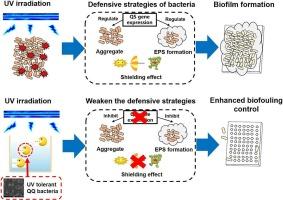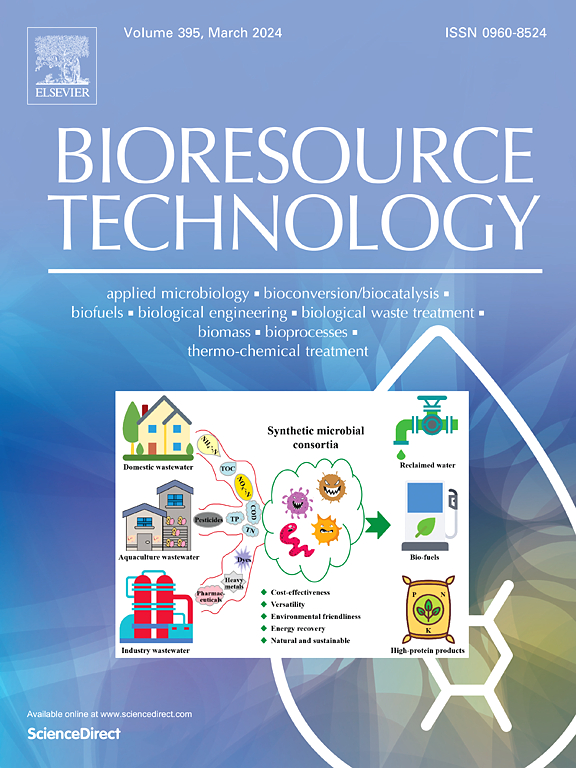抗紫外线菌株的分离及其预处理和群体淬灭控制反渗透生物污染的性能。
IF 9
1区 环境科学与生态学
Q1 AGRICULTURAL ENGINEERING
引用次数: 0
摘要
传统的杀菌剂和紫外线消毒通常对反渗透(RO)中的生物污染无效。本研究探索了一种新的方法,将从活性污泥中分离出的耐紫外线群体猝灭(QQ)细菌葡萄球菌(Staphylococcus sp. SSN)与紫外线处理相结合,以延缓生物污染的发生。在紫外线照射下,固定的葡萄球菌sp. SSN保留QQ活性,减少铜绿假单胞菌细胞生长(52% %),生物膜形成(81% %)和细胞外聚合物物质产生(22% %)。UV- qq联合处理在2 h内达到3.5 log的细菌灭活效果,优于单独使用UV。观察到的增强效果可能是由于群体感应和生物膜基因表达受到抑制,紫外线屏蔽减少和氧化应激增加。在实际废水实验中,UV-QQ预处理在6 天后将RO通量下降至45 %,而对照组为70 %。这些发现表明,将QQ细菌与紫外线消毒相结合,可以减缓反渗透中水再利用应用的生物污染发展。本文章由计算机程序翻译,如有差异,请以英文原文为准。

Isolation and performance of ultraviolet tolerant bacterium strain for pretreatment and quorum quenching to control reverse osmosis biofouling
Conventional biocides and UV disinfection are often ineffective against biofouling in reverse osmosis (RO). This study explores a new approach to combine Staphylococcus sp. SSN, a UV-tolerant quorum quenching (QQ) bacterium isolated from activated sludge and UV treatment to defer the onset of biofouling. Under UV exposure, immobilized Staphylococcus sp. SSN retained QQ activity, reducing biofilm formation (by 81 %), and extracellular polymeric substance production (by 22 %). Within 2 h, the combined UV-QQ treatment achieved 3.5-log bacterial inactivation, outperforming UV alone. The observed enhanced effect is likely due to suppressed quorum sensing and biofilm gene expression, reducing UV shielding and increasing oxidative stress. In real wastewater experiments, UV-QQ pretreatment lowered RO flux decline to 45 % after 6 days, compared to 70 % in the control. These findings demonstrate the potential of integrating QQ bacteria with UV disinfection to slow down biofouling development in RO for water reuse applications.
求助全文
通过发布文献求助,成功后即可免费获取论文全文。
去求助
来源期刊

Bioresource Technology
工程技术-能源与燃料
CiteScore
20.80
自引率
19.30%
发文量
2013
审稿时长
12 days
期刊介绍:
Bioresource Technology publishes original articles, review articles, case studies, and short communications covering the fundamentals, applications, and management of bioresource technology. The journal seeks to advance and disseminate knowledge across various areas related to biomass, biological waste treatment, bioenergy, biotransformations, bioresource systems analysis, and associated conversion or production technologies.
Topics include:
• Biofuels: liquid and gaseous biofuels production, modeling and economics
• Bioprocesses and bioproducts: biocatalysis and fermentations
• Biomass and feedstocks utilization: bioconversion of agro-industrial residues
• Environmental protection: biological waste treatment
• Thermochemical conversion of biomass: combustion, pyrolysis, gasification, catalysis.
 求助内容:
求助内容: 应助结果提醒方式:
应助结果提醒方式:


